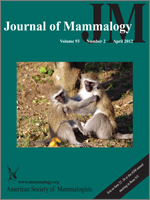Fur seals rely on pelage consisting of dense, fine underfur protected by guard hairs as their primary means of limiting thermoregulatory cost. A distinctive syndrome of alopecia occurs at high prevalence in 1 colony of Australian fur seals (Arctocephalus pusillus doriferus). It is characterized by bilaterally symmetrical hair loss on the dorsal body surface and a biased prevalence toward juvenile females. Light and scanning electron microscopy demonstrated that alopecia is due to fracture of the hair shaft above the skin level. No evidence of viral, bacterial, fungal, or parasite infection was found and histological examination of skin biopsies revealed no pathological variation between case and control seals. Affected animals had statistically significant lower tyrosine and zinc concentrations in hair than unaffected seals. This may increase hair brittleness and, therefore, predispose its fracture. Alopecia cases also had higher levels of heavy metals and persistent organic pollutants, which may indicate they forage in ecosystems where concentrations of pollutants are higher.
How to translate text using browser tools
1 April 2012
Characterization and causal investigations of an alopecia syndrome in Australian fur seals (Arctocephalus pusillus doriferus)
Michael Lynch,
Roger Kirkwood,
Rachael Gray,
David Robson,
Greg Burton,
Leslie Jones,
Rodney Sinclair,
John P. Y. Arnould
ACCESS THE FULL ARTICLE

Journal of Mammalogy
Vol. 93 • No. 2
April 2012
Vol. 93 • No. 2
April 2012




